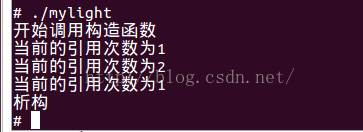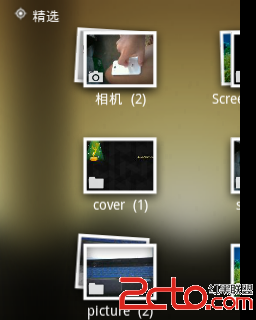編輯:關於Android編程
本文實例講述了Android編程實現應用自動更新、下載、安裝的方法。分享給大家供大家參考,具體如下:
我們看到很多Android應用都具有自動更新功能,用戶一鍵就可以完成軟件的升級更新。得益於Android系統的軟件包管理和安裝機制,這一功能實現起來相當簡單,下面我們就來實踐一下。
1. 准備知識
在AndroidManifest.xml裡定義了每個Android apk的版本標識:
<manifest xmlns:android="http://schemas.android.com/apk/res/android" package="com.myapp" android:versionCode="1" android:versionName="1.0.0"> <application></application> </manifest>
其中,android:versionCode和android:versionName兩個字段分別表示版本代碼,版本名稱。versionCode是 整型數字,versionName是字符串。由於version是給用戶看的,不太容易比較大小,升級檢查時,可以以檢查versionCode為主,方 便比較出版本的前後大小。
那麼,在應用中如何讀取AndroidManifest.xml中的versionCode和versionName呢?可以使用PackageManager的API,參考以下代碼:
public static int getVerCode(Context context) {
int verCode = -1;
try {
verCode = context.getPackageManager().getPackageInfo(
"com.myapp", 0).versionCode;
} catch (NameNotFoundException e) {
Log.e(TAG, e.getMessage());
}
return verCode;
}
public static String getVerName(Context context) {
String verName = "";
try {
verName = context.getPackageManager().getPackageInfo(
"com.myapp", 0).versionName;
} catch (NameNotFoundException e) {
Log.e(TAG, e.getMessage());
}
return verName;
}
或者在AndroidManifest中將android:versionName=”1.2.0″寫成 android:versionName=”@string/app_versionName”,然後在values/strings.xml中添加對應 字符串,這樣實現之後,就可以使用如下代碼獲得版本名稱:
public static String getVerName(Context context) {
String verName = context.getResources()
.getText(R.string.app_versionName).toString();
return verName;
}
同理,apk的應用名稱可以這樣獲得:
public static String getAppName(Context context) {
String verName = context.getResources()
.getText(R.string.app_name).toString();
return verName;
}
2. 流程框架
比較》下載》安裝。
3. 版本檢查
在服務端放置最新版本的apk文件,如:http://localhost/myapp/myapp.apk
同時,在服務端放置對應此apk的版本信息調用接口或者文件,如:http://localhost/myapp/ver.json
ver.json中的內容為:
[{"appname":"jtapp12","apkname":"jtapp-12-updateapksamples.apk","verName":1.0.1,"verCode":2}]
然後,在手機客戶端上進行版本讀取和檢查:
private boolean getServerVer () {
try {
String verjson = NetworkTool.getContent(Config.UPDATE_SERVER
+ Config.UPDATE_VERJSON);
JSONArray array = new JSONArray(verjson);
if (array.length() > 0) {
JSONObject obj = array.getJSONObject(0);
try {
newVerCode = Integer.parseInt(obj.getString("verCode"));
newVerName = obj.getString("verName");
} catch (Exception e) {
newVerCode = -1;
newVerName = "";
return false;
}
}
} catch (Exception e) {
Log.e(TAG, e.getMessage());
return false;
}
return true;
}
比較服務器和客戶端的版本,並進行更新操作。
if (getServerVerCode()) {
int vercode = Config.getVerCode(this); // 用到前面第一節寫的方法
if (newVerCode > vercode) {
doNewVersionUpdate(); // 更新新版本
} else {
notNewVersionShow(); // 提示當前為最新版本
}
}
詳細方法:
private void notNewVersionShow() {
int verCode = Config.getVerCode(this);
String verName = Config.getVerName(this);
StringBuffer sb = new StringBuffer();
sb.append("當前版本:");
sb.append(verName);
sb.append(" Code:");
sb.append(verCode);
sb.append(",/n已是最新版,無需更新!");
Dialog dialog = new AlertDialog.Builder(Update.this).setTitle("軟件更新")
.setMessage(sb.toString())// 設置內容
.setPositiveButton("確定",// 設置確定按鈕
new DialogInterface.OnClickListener() {
@Override
public void onClick(DialogInterface dialog,
int which) {
finish();
}
}).create();// 創建
// 顯示對話框
dialog.show();
}
private void doNewVersionUpdate() {
int verCode = Config.getVerCode(this);
String verName = Config.getVerName(this);
StringBuffer sb = new StringBuffer();
sb.append("當前版本:");
sb.append(verName);
sb.append(" Code:");
sb.append(verCode);
sb.append(", 發現新版本:");
sb.append(newVerName);
sb.append(" Code:");
sb.append(newVerCode);
sb.append(", 是否更新?");
Dialog dialog = new AlertDialog.Builder(Update.this)
.setTitle("軟件更新")
.setMessage(sb.toString())
// 設置內容
.setPositiveButton("更新",// 設置確定按鈕
new DialogInterface.OnClickListener() {
@Override
public void onClick(DialogInterface dialog,
int which) {
pBar = new ProgressDialog(Update.this);
pBar.setTitle("正在下載");
pBar.setMessage("請稍候...");
pBar.setProgressStyle(ProgressDialog.STYLE_SPINNER);
downFile(Config.UPDATE_SERVER + Config.UPDATE_APKNAME);
}
})
.setNegativeButton("暫不更新",
new DialogInterface.OnClickListener() {
public void onClick(DialogInterface dialog,
int whichButton) {
// 點擊"取消"按鈕之後退出程序
finish();
}
}).create();// 創建
// 顯示對話框
dialog.show();
}
4. 下載模塊
void downFile(final String url) {
pBar.show();
new Thread() {
public void run() {
HttpClient client = new DefaultHttpClient();
HttpGet get = new HttpGet(url);
HttpResponse response;
try {
response = client.execute(get);
HttpEntity entity = response.getEntity();
long length = entity.getContentLength();
InputStream is = entity.getContent();
FileOutputStream fileOutputStream = null;
if (is != null) {
File file = new File(
Environment.getExternalStorageDirectory(),
Config.UPDATE_SAVENAME);
fileOutputStream = new FileOutputStream(file);
byte[] buf = new byte[1024];
int ch = -1;
int count = 0;
while ((ch = is.read(buf)) != -1) {
fileOutputStream.write(buf, 0, ch);
count += ch;
if (length > 0) {
}
}
}
fileOutputStream.flush();
if (fileOutputStream != null) {
fileOutputStream.close();
}
down();
} catch (ClientProtocolException e) {
e.printStackTrace();
} catch (IOException e) {
e.printStackTrace();
}
}
}.start();
}
下載完成,通過handler通知主ui線程將下載對話框取消。
void down() {
handler.post(new Runnable() {
public void run() {
pBar.cancel();
update();
}
});
}
5. 安裝應用
void update() {
Intent intent = new Intent(Intent.ACTION_VIEW);
intent.setDataAndType(Uri.fromFile(new File(Environment
.getExternalStorageDirectory(), Config.UPDATE_SAVENAME)),
"application/vnd.android.package-archive");
startActivity(intent);
}
如果你將apk應用發布到market上,那麼,你會發現market內建了類似的模塊,可以自動更新或者提醒你是否更新應用。那麼,對於你自己的 應用需要自動更新的話,自己內建一個是不是更加方便了呢?本文提到的代碼大多是在UpdateActivity.java中實現,為了能夠使更新過程更加 友好,可以在最初launcher的Activity中建立一個線程,用來檢查服務端是否有更新。有更新的時候就啟動UpdateActivity,這樣 的使用體驗更加平滑。
更多關於Android相關內容感興趣的讀者可查看本站專題:《Android開發入門與進階教程》、《Android通信方式總結》、《Android基本組件用法總結》、《Android視圖View技巧總結》、《Android布局layout技巧總結》及《Android控件用法總結》
希望本文所述對大家Android程序設計有所幫助。
 詳解Android中Notification的使用方法
詳解Android中Notification的使用方法
在消息通知的時候,我們經常用到兩個控件Notification和Toast。特別是重要的和需要長時間顯示的信
 Android framwork 分析之智能指針LightRefBase ,sp,wp,RefBase
Android framwork 分析之智能指針LightRefBase ,sp,wp,RefBase
Android的framework層都是由c++來實現的 大家都知道c++最令人頭痛的莫過於內存洩漏了 ,如果是一個人開發還好 當new出來一個對象後 應該會記得dele
 android性能測試systrace
android性能測試systrace
一:簡介 systrace 是 Android4.1 引入的一套用於做性能分析的工具。 基於 Linux 內核的 ftrace 機制(用於跟蹤 Linux 內核的函數調用
 Android NDK使用libjpeg解析JPEG圖片,並顯示到SurfaceView上
Android NDK使用libjpeg解析JPEG圖片,並顯示到SurfaceView上
SurfaceView大概是谷歌提供給開發者最吸引人的的組件了,原因是SurfaceView的界面刷新允許在非UI線程中更新,正因為此,很多頻繁更新界面的應用,如視頻播放